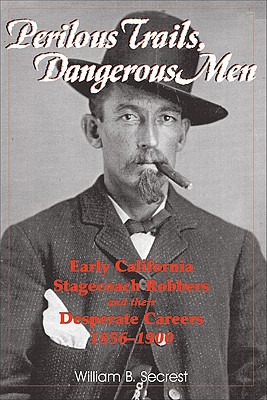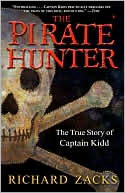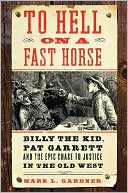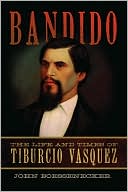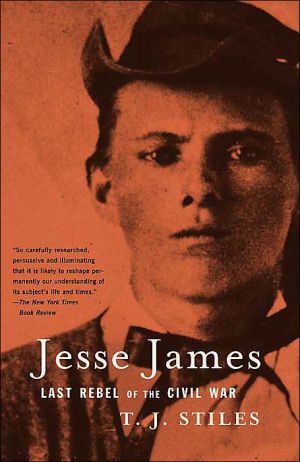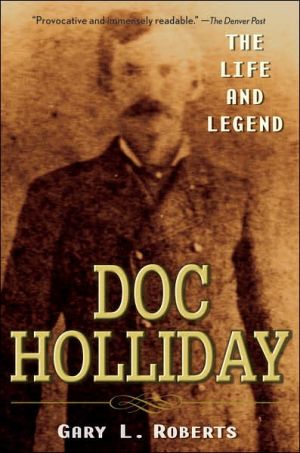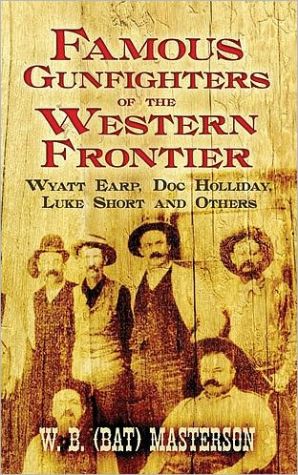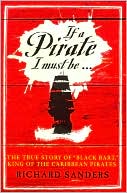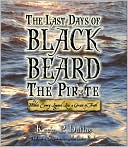Perilous Trails, Dangerous Men Early California Stagecoach Robbers and Their Desperate Careers 1856-1900
Punctuated by gunshots and posse hoofbeats, these true tales, many told for the first time, illustrate, in both words and rare photographs, perilous trails and dangerous men from a time gone forever. Profiling men such as stagecoach robber Shorty Harris, who just wanted to buy a restaurant with his loot and find some peace, and Black Bart, the most famous stagecoach robber ever, who robbed 28 stages in eight years and between robberies led the life of a society gentleman in San Francisco,...
Search in google:
Punctuated by gunshots and posse hoofbeats, these true tales, many told for the first time, illustrate, in both words and rare photographs, perilous trails and dangerous men from a time gone forever. Profiling men such as stagecoach robber Shorty Harris, who just wanted to buy a restaurant with his loot and find some peace, and Black Bart, the most famous stagecoach robber ever, who robbed 28 stages in eight years and between robberies led the life of a society gentleman in San Francisco, this collection illustrates a desperate breed of fascinating characters who added their stories to the legends of the Old West.
John Allenalias "Sheet-Iron Jack" (Real name John D. Gundlack) \ Hero, liar, thief, or just plain scoundrel, perhaps Jack Allen was all of that, and more. He was certainly a character, in any case.\ Author's collection.\ The Civil War honed and positively developed the characters of many who participated in this most terrible of American conflicts. But there were those who were adversely affected, also. For some the war was an excuse for their later failings. Others merely needed the push into crime provided by a rough, male society in a gold-mad and hectic period of history.\ Born in New York State about 1849, John Gundlack enlisted in the 32nd Maine Volunteer Infantry Regiment in March 1864 at the age of fifteen. He lost a finger and suffered other injuries while participating in the siege of Petersburg in early 1864. His unit suffered severe battle casualties and he was mustered out in Virginia on July 15, 1865. His war wounds are fully described in army medical records and match his physical description in San Quentin prison records. An older brother had been killed at Antietam.\ Perhaps ex-soldier Gundlack had gotten into trouble of some kind, for he apparently headed west immediately after his discharge. One account states he met a frontiersman named Hoag in San Francisco, and together they were hired as scouts or packers at Fort Crook in Shasta County. Somewhere along the way, Gundlack changed his name to John Allen. He was in southern Oregon in late September of 1866, where he claimed to have joined a party of civilians accompanying Captain Samuel Munson, 9th Infantry, and thirty troopers chasing Indian horse thieves. When one of the party, rancher John Townsend, was killed in an ambush, the party retreated. Although this is a documented incident, there is no documentation of Allen's participation.\ Years later, Allen also claimed to have joined General George Crook's command as a scout and guide, but verification, again, is lacking. In September of 1867, Allen was ordered to climb a bluff near Steen's Mountain to scout and give signals for an attack. To protect himself, he strapped a large camp frying pan to his chest and was afterwards called "Sheet-Iron Jack." He also asserted that he had been in the party that rescued a "Miss Hattie Henderson" who had been carried off by the Indian war party that had captured a stagecoach and murdered her father and cousin. This seems to be another fantasy, based on an incident in which a family named Pierson was murdered by Indians in early 1868. There was a stagecoach captured by the Indians in November, 1866, in the same northeastern part of California. But no one was killed or captured, and again, Jack seems to have inserted himself into a real incident in order to utilize his hero status for his own purposes at a later date.\ In 1873, Allen claimed to have carried the mail between Klamath, Oregon, and the lava beds during the Modoc War, but a search of records in the National Archives failed to turn up his name. It is perhaps significant to recognize that all these heroic claims were made at the time Allen was trying to secure a pardon from prison. Reportedly a barber in Tehama County during the mid-1870s, Allen also was a laborer who sheared sheep and did other odd jobs. He was frequently drunk and in trouble, and when his purse got too light, horse theft and other types of thievery were not beneath him, either. In early 1875, he was sentenced to San Quentin for two years when he tried to rob a blind old farmer named Dersche and his wife. In the custody of Deputy Sheriff Harold, Jack boarded the Shasta stage on the evening of February 18 for his one-way trip to state prison. The coach had gone some two miles from town when it was unceremoniously stopped, as reported by District Attorney Clay W. Taylor, who had convicted Jack:\ The stage left town about 7 o'clock, Jerry Culverhouse driving, with old man Harold, and a prisoner, John Allen, alias "Sheet-Iron Jack," and two or more passengers on board. When they arrived at the foot of the hill, just below Lower Springs, and while the team were in a trot, some men (They say there were three) stepped out, and one cried halt or stop, being nearly opposite the driver when he spoke. He spoke low, and Jerry gave his horses a cut with the whip, and they made several jumps, when one of the men fired with a shotgun, hitting Jerry in the head and shoulders.The driver was badly wounded, but he held on to the horses until they stopped down the road. A passenger took the lines and the coach then returned to Shasta. All the way back to town, "Sheet-Iron Jack cussed the robbers," noted a local newspaper, "until the air smelled like brimstone He said that it was an unmitigated outrage that a man could not be permitted to travel over Shasta County territory, especially when he was on his way to work for the interest of the state, without having his life endangered by shots fired by murderous highwaymen."\ As a posse was being organized in town, a new driver was secured, and the stage again headed for Redding and other points south. When passing through Red Bluff on the stage, Jack seemed quite unconcerned about the incident as reported in the People's Cause, February 20, 1875: Did not agree with him. - "Sheet-Iron Jack," while passing through this town on his way from Shasta to San Quentin, where he will work for the benefit of the state, or the prison contractors, for the next two years, when asked by one of our citizens where he was going, replied, "I am going where I can get some sea breeze; this Northern climate does not agree with my health and I must make a change."\ Allen was issued No. 6395 in the San Quentin Inmate Register. His record makes note of the many scars on his body resulting from his Civil War wounds. On appeal, he was re-tried in July and released on an assault charge after serving some time and paying a fine. In September of 1876, Allen was shearing sheep for a man named Berry at Cottonwood Station, between Redding and Red Bluff. He had met a notorious character named John Toney in prison, and the two met again after their release. Toney and a young Englishman named Frank Chapman were working for a local farmer nearby, and together the three men discussed making a little easy money. Allen later claimed to have planned the ensuing holdups, the first of which took place on November 6, 1876. In the evening, Toney and Chapman hunkered down in a clump of willows lining the road and stopped the approaching coach as reported in the Yreka Union, on November 11, 1876:\ On Monday evening, the Weaverville and Redding stage was stopped by two highwaymen, who, leveling shotguns at the driver requested him to hand over Wells, Fargo & Co's Express box. The driver, of course, complied with their request and was ordered to drive on. As the treasure was not in the box, the robbers got nothing but a few letters. This makes the second stage robbery in Shasta county within a week.\ When his two partners held up two other stages, the second one containing $1,100 in the treasure box, Allen got drunk and turned them in. His motives are not clear, but perhaps there was a dispute over dividing the loot and Jack decided to try for the Wells, Fargo reward. When he admitted to planning the robberies with Chapman and Toney, Sheet-Iron Jack was also jailed as an accessory. The Marysville Daily Appeal reported that the outlaws were upset with their lodgings in the Shasta jail and voiced their displeasure by trying to break out on the night of December 12, 1876:\ Five noted State Prison birds nearly succeeded in escaping from the Shasta jail last Tuesday night. The list embraces Toney, Sheet-Iron Jack, Chapman, Leonard and Edwards. When Sheriff Hull and his deputies discovered their operations they had nearly dug a hole through the wall of the prison, and in a short time longer would have been free. Sheet-Iron Jack's trial has probably concluded, and Toney and Chapman pleaded guilty at the opening of the court. These beauties will probably get twenty years in the State Prison .\ The prisoners had obtained tools, and when caught, they had already filed through their shackles and had tunneled nearly through the jail wall. "Since then," noted the Appeal, "they have worn jewelry that is more useful than ornamental." Ex-convict Toney received a twenty-one-year sentence, while Jack Allen received twenty-four years. Chapman got only four. They arrived at San Quentin on December 25, 1876. Chapman was pardoned in May 1877, on condition he return to England, which he did. Toney kept his nose clean and was released in 1889.\ A newspaper reported Allen had married a girl named Parliee Parsons before he left for prison, and Jack later referred to his "little home" and "family" when appealing for a pardon. Again, documentation is lacking. As early as June 1877, Allen began churning out whining letters to witnesses, to the governor, Wells, Fargo executives and to lawyers to build a case for a pardon. In the blizzard of paperwork that followed, Allen and his lawyer played up his Civil War record and wounds, which were true, and his record as an Indian fighter, which was highly exaggerated, if any of it was true. In October 1882, when he didn't seem to be making any headway, Allen wrote his father, John G. Gundlack, a respectable retired businessman in Canada. Horrified at the news, the father immediately wrote Governor George Perkins through the United States Consul at Ottawa, Canada. Governor Perkins responded by commuting Allen's sentence to only ten years. He was released in June of 1883. Characteristically, he never left the state or visited his parents as he had promised the governor.We can assume Jack Allen stole horses and worked at odd jobs for the next six months or so. He rode into Red Bluff in Tehama County in late March 1884, and was ordered out of town as an undesirable character. A few days later, he was back in town, drunk and making a nuisance of himself. When Tehama County Sheriff Martin received a telegram from San Francisco asking that he arrest and hold Sheet-Iron Jack, he promptly sought out the badman, as reported in the Red Bluff Weekly Democrat, April 5, 1884: Sheriff Martin at once went in search of his man, accompanied by Undersheriff Lennon, and found him in front of Cone & Kimball's store, near the California Beer Hall. Being well acquainted with him, the sheriff reached out his hand as if to shake hands, saying, "How are you Jack"; but Jack, instead of taking Martin's hand, pulled his pistol and thrust it into the sheriff's face. Sheriff Martin was too quick for him and caught his arm and turned the pistol toward Jack's breast, coolly saying, "Pull 'er off now if you want to." Undersheriff Lennon seized Jack from behind, and Policemen Gilson and Kennedy came to their assistance and it took all of them and one or two citizens to get him to the jail fighting all the way.\ It seems Jack had stolen a five hundred dollar horse in San Francisco and sold it for considerably less. Detective Dan Coffee arrived on April 4 and returned the prisoner to the Bay City. "If he was arrested because he sold a $500 horse for $75," commented a local newspaper, "we think the arrest was perfectly justifiable."\ Convicted and sentenced to a six-year term, Jack found himself in Folsom State Prison this time. A new governor, Robert Waterman, was now bombarded by Allen who unloaded his same tired war stories (this time claiming to have been only fourteen when he enlisted during the Civil War). Despite the shameless boasting in his letters and the fact that he was serving his third term in prison, Jack was pardoned again in 1888. Warden John McComb wasn't fooled, however. In a note among Allen's pardon papers, he scribbled: "Jack Allen represents himself to be a soldier of the Union Army, and has received a pension given to John Gundlack. I think Allen is an imposter, and that he has never been anything else but a thief."\ Did John Gundlack, alias Sheet-Iron Jack Allen, see the error of his ways and finally stick to the straight and narrow? Of course not. In December of 1888, he was caught stealing a handkerchief in a San Francisco saloon and hauled before a judge who knew of his prison record. He was sentenced to six months in the San Francisco House of Correction, together with a fine of five hundred dollars. Again came the flood of petitions, and Jack was released in May of 1889. After being picked up in Sacramento for petit larceny in 1893, he receded into history's pages.\ Hume and Thacker's "Robbers' Record"; San Quentin State Prison Register; Governor's Pardon Files, California State Archives, Sacramento; Asa Merrill Fairfield, Fairfield's History of Lassen County California, San Francisco, H.S. Crocker Co., 1916; Military Reference Branch, National Archives, Medical and Pension Records of John D. Gundlack, Michael E. Pilgrim to the author, December 8, 1993; Marysville Daily Appeal, November 21, December 13, 15, 19, 1876; Yreka Union, November 11, 1876; Redding Republican Free Press, April 5, 1884; Shasta Courier, December 30, 1876; San Francisco Examiner, September 17, 27, 1882; San Francisco Chronicle, April 1, 1884.\ Author Biography: Born in Fresno, California, in March of 1930, William B. Secrest grew up in the great San Joaquin Valley. After high school he joined the Marine Corps where he served in a guard detachment and in a rifle company in the early years of the Korean War. Returning to college, he obtained a BA in education, but for many years he served as an art director for a Fresno advertising firm.\ Secrest has been interested in history since his youth and early began comparing Western films to what really happened in the West. A hobby at first, this avocation quickly developed into correspondence with noted writers and more serious research. Not satisfied in a collaboration with friend and Western writer Ray Thorp, Secrest began researching and writing his own articles in the early 1960s.\ Although at first he wrote on many general Western subjects, some years ago Secrest realized how his home state has consistently been neglected in the Western genre and concentrated almost exclusively on early California subjects. He has produced hundreds of articles for such publications as Westways, Montana, True West, and the American West, while publishing seven monographs on early California themes. His book I Buried Hickok (Early West Publishing Co.) appeared in 1980, followed by Lawmen & Desperadoes (The Arthur H. Clark Co.) in 1994 and Dangerous Trails (Barbed Wire Press) in 1995. A biography of noted San Francisco police detective Isaiah Lees has been accepted for publication. A current project is a biography of Harry Love, the leader of the rangers who tracked down Joaquin Murrieta.
John AllenS.A. Allen Charles Baker Tom Bell Charles Bowles Thomas Brown Clodoveo Chavez Luis J. Dreibelbis Lawrence English Dick Fellows A.P. Hamilton William M. Harrall John Hayes William H. Howard Rufus Henry Ingram Thomas Jackson John Keener Frank Kellet Charley Meyers William A. Minor Charles and John Ruggles Milton A. Sharp Milton D. Shepardson Francisco and Santos Sotelo Ormstead Thurman Tiburcio Vasquez Frank Williams
